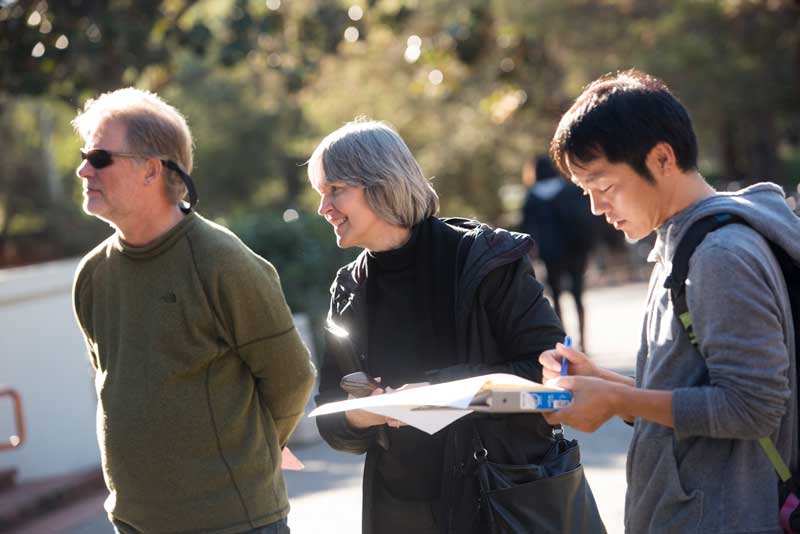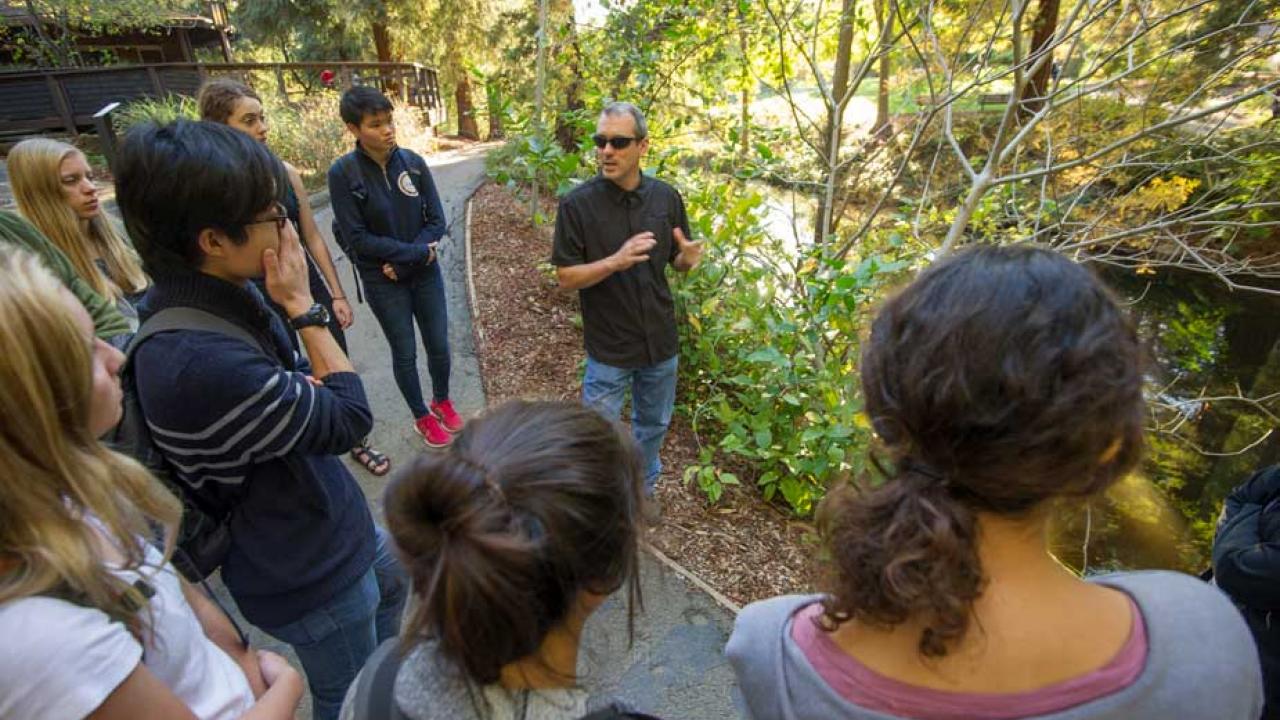Quick Summary
- Professor Randy Dahlgren leads undergraduate class in water-quality monitoring
- Fieldwork coincides with flow-improvement project starting soon in arboretum’s east end
- Research applicable worldwide, to fight problem of excess nutrients in aquatic ecosystems
UC Davis has a secret weapon in its mission to clean and beautify the Arboretum Waterway: homegrown expertise.
An expanding group of undergraduate students — led by Randy Dahlgren, a professor and world leader in water-quality biogeochemistry — will sample the water and provide important analysis throughout the university’s multiyear effort to enhance the Arboretum Waterway. The students are part of a new group internship that Dahlgren designed to provide undergraduates hands-on experience in water-quality and aquatic ecosystem restoration.
“It’s good for everyone,” Dahlgren said. “The students are playing a critical role in solving real-world problems, which gives restoration efforts a better chance to succeed, which benefits all of us who enjoy the centerpiece of the arboretum.”
Visitors love walking the 3.5-mile loop around the Arboretum Waterway — except when the water is covered with unsightly duckweed and algae, which are a natural byproduct of what is essentially a stagnant pond.
The waterway sits in the channel that used to be the North Fork of Putah Creek, but long ago the creek was diverted due to frequent flooding. Now, the Arboretum Waterway is dammed at both ends and serves as a holding pond for storm runoff and a receptacle for clean, recycled wastewater.
Starting later this month, UC Davis will launch a four-year project to reduce algae growth and sedimentation by increasing water flow, deepening and narrowing the channel, and planting more native wetland vegetation on the banks.
“We’re introducing small elevation gains via weirs — barriers across the waterway that alter its current—as well as a pump to recirculate the water,” said Andrew Fulks, assistant director of the UC Davis Arboretum and Public Garden. “Picture a series of large, natural steps with water cascading down. Once the water reaches the bottom step, a pump will take the water back to its starting point.”
How water-quality monitoring helps
Water quality is not a toggle switch, not something you switch on and off. It takes a process to improve water quality and restore aquatic ecosystems.

“It’s like cholesterol in our blood,” Dahlgren explained. “When your cholesterol is too high, you take progressive steps to lower it. Maybe first you increase exercise, then change your diet, then turn to statin drugs if the other two steps aren’t effective.”
But you don’t know whether interventions are working if you don’t monitor the blood or, in this case, the water. Throughout the restoration project, Dahlgren and his students will measure water-quality indicators such as levels of nitrogen, phosphorous, dissolved oxygen, and algae.
The group internship got underway last fall with 10 undergraduates majoring in environmental science and management. Dahlgren will offer similar group internships with more students over the next few years.
“It was a lot of fun,” said Samuel Moose, a third-year student and member of the inaugural group. “I really enjoyed the fieldwork and the opportunity to solve problems.”
“And we got to see the big picture,” added Anna Britzman, who plans to pursue a career in wildlife conservation. “We worked with so many experts, and it helped me see how important water quality is to restoring wildlife habitat.”
Right in his own backyard
The research also has strong international relevance because aquatic ecosystems worldwide suffer from excess nutrients in the water. For the past 10 years, Dahlgren has studied nutrient-rich aquatic dead zones in China that are strikingly similar to the Arboretum Waterway. The big difference for Dahlgren is that he can collect water samples in the arboretum on his bike in 30 minutes.
Fulks is grateful for the proximity, too.
“Randy and the interns are helping us monitor the effect of our efforts, which is so important to the project’s overall success,” Fulks said. “By partnering with our experts and students here on campus, we are creating a living laboratory as well as a treasured resource for our community.”
More about the Arboretum Waterway Maintenance and Enhancement Project
Media Resources
Diane Nelson, 530-752-1969, denelson@ucdavis.edu
